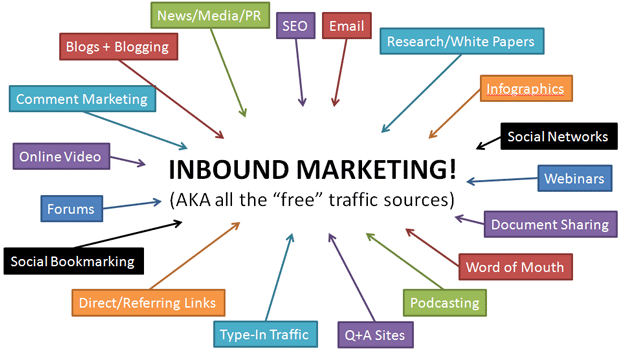Every modern marketer knows that a social media presence is key to reaching new customers and maintaining relationships, but too many brands are baffled by how to make the platforms work to their benefit. Here, we outline the best practices of social media professionals everywhere and offer a glimpse at a few strategies you can use to take your efforts to the next level:
1. Being social is the primary goal
While it’s easy to get caught up in the soapboxing nature of social media, the key to winning in this space is to create quality interactions. Ultimately, your social campaigns aren’t about you; they’re about your followers and subscribers. Use the Honeycomb Framework of Social Media as a basis for engaging with your brand’s champions, asking relevant questions and creating a sense of curiosity in each of your outlets. The goal is to drive engagement and repeat visits, and nothing does that more than a fresh, interesting conversation.
2. A consistent voice makes all the difference
We’ve seen it dozens of times: Companies take to the social sphere with a voice that bears little resemblance to their brand image. While it’s certainly okay to be slightly more casual than you’d be in a company report, don’t make the mistake of changing your tone so drastically that it sends your followers’ heads spinning. Your demographic flocks to you for a reason, and they want to feel that your social presence is an extension of your established brand voice. When a law firm suddenly shares 20 Grumpy Cat photos or a local pub posts nothing but severe tirades, it doesn’t create a sense of dimension; it raises eyebrows and smashes your credibility. Strive for a tone that matches your website, and enlist the help of an experienced copywriter if you need some extra guidance.
3. Transparency is the word of the day
Social users don’t want to feel as if they’ve hit an impenetrable fortress when they visit your pages. Let your followers and subscribers know a little more about your brand and its vision by sharing behind-the-scenes videos, introducing your team and answering any key questions. If you’re able to do so without wading into tricky legal territory, you could even offer users a peek at previously unseen processes like brainstorming meetings and business events.
[Tweet “Give your followers the tools they need to connect with you on a human level. You’ll be rewarded with consumer trust.”]
4. Each outlet requires fresh thinking
Repeat after us: Facebook isn’t Twitter, and Instagram isn’t Pinterest. What works for one outlet won’t necessarily work for the other, and social media professionals know that driving engagement in each sphere is all about knowing how users interact with them. Consider these guidelines as you create stories for individual platforms:
- Twitter is about timely tidbits that are short and sweet. Use this platform to discuss breaking developments, release time-sensitive information, and engage with other brands and users in a quick, informal way.
- Facebook is equally good for time-sensitive information, but it’s more suited than Twitter to in-depth conversations and evergreen content. What’s more, the user base skews slightly older here, so make Facebook your focus if your demographic reaches heavily into the over-40 crowd.
- Pinterest makes the biggest splash with women, but its rules are completely different than nearly every other platform. Long pieces of text are generally unwelcome, and engagement is based entirely on the quality and uniqueness of images you share. Dive into it only if you run a heavily visual business — or have an art director on staff who can create an image-centric tone — and don’t pin only your own pictures. That’s a big no-no among the Pinterest set.
- Similar to Pinterest, Instagram is a largely visual medium. Unlike Pinterest, it’s entirely based on images you’ve taken. Use this for behind-the-scenes photos and casual shots targeted toward a younger demographic.
- LinkedIn is the business side of social. Though it’s still on its way up in terms of active sharing, this is a great place to discuss company news, post relevant industry articles and engage with other professionals.
5. Brand boasting is a slippery slope
Though it’s okay to crow about your company’s accomplishments from time to time, steer clear of constant updates to that effect. There’s a large difference between brand awareness and brand boasting; where the former helps bring your company name and vision to the front of the conversation, the latter comes off as hollow and egotistical. Think of it like this: Would you want to be cornered at a party by an acquaintance who talked for hours about his accomplishments but never once asked how you were doing? Social media is that party. Don’t be that guy.
6. Content is more important than keywords (and hashtags)
Content managers routinely toe the line between search optimization and quality information, and no place highlights the importance of that balance like the social media sphere. While well-placed keywords and hashtags can help your brand hit crucial awareness, the tactics are also slightly more transparent — and the users much savvier — on these platforms. If you plan to lace your posts with attention-getting keys and tags, make sure you’re providing inarguably solid content. A tweet packed with hashtags may show up in search results, but few users will engage with such blatant self-promotion.
7. Collaboration isn’t a dirty word
Yes, social media is a popularity contest. No, you don’t have to go it alone. Some of the world’s best online marketers turn to collaborations to bring new users into their social folds. Fashion companies team up with popular bloggers, restaurants hold hands with food providers, and instrument stores pair with local musicians.
One of our favorite examples of this strategy, however, comes from an off-the-cuff moment involving Kit Kat and Oreo. In response to a tweet by a user who followed both brands, Kit Kat challenged Oreo to an online game of tic-tac-toe to see which company could win her affections. Though Oreo declined the actual game, they responded with a playful image and the hashtag #GiveOreoABreak. Talk about social prowess.
8. Guidelines leave nothing to chance
It’s an undeniable fact: Most of us have experience with social media. How we interact with our friends on private pages, however, varies greatly from how a brand should position itself across the space. Before beginning any social campaign, create a list of voice, tone and conduct guidelines and disperse them to each person involved in your business. This allows everyone to stay on the same page in terms of what to post and when to post it, and it eliminates the possibility of any one person throwing your brand into a public relations tailspin with a poorly worded tweet. You can even create a list of rules regarding what’s acceptable to share personally; if you don’t want employees discussing the brand in a negative way on their private pages, put it in writing.
9. Measuring is winning
If you’re not measuring the impact of your social efforts, you’re merely acting on blind assumptions. Dozens of new technologies exist to monitor everything from Web-wide conversations to promotional effectiveness, and the world’s top brands use these tools to target their content and future campaigns. Simply Measured and Social Bakers measure social results, Group High and this brand tracker can help you identify influencers, and Brandwatch and Social Mention keep an eye on who’s talking about you and where they’re having the conversations. Invest in any of these options, and you’ll shine a light on where your brand is most — and least — effective.
10. Feedback allows you to grow
Too many companies shy away from social media for fear of negative opinions, but the ability to monitor less-than-stellar feedback is actually one of social’s biggest benefits. After all, focus groups only tell you so much; by watching what customers say when they’re not being asked the questions by a company representative, you’ll get invaluable insight on how your business could better serve your audience.
It’s also a fantastic opportunity to right any wrongs. If a user posts about a disappointing experience, for example, you can easily respond with an apology and the offer of additional services. That sort of transparency is what social is all about — and it’s the best way to win at digital marketing.











